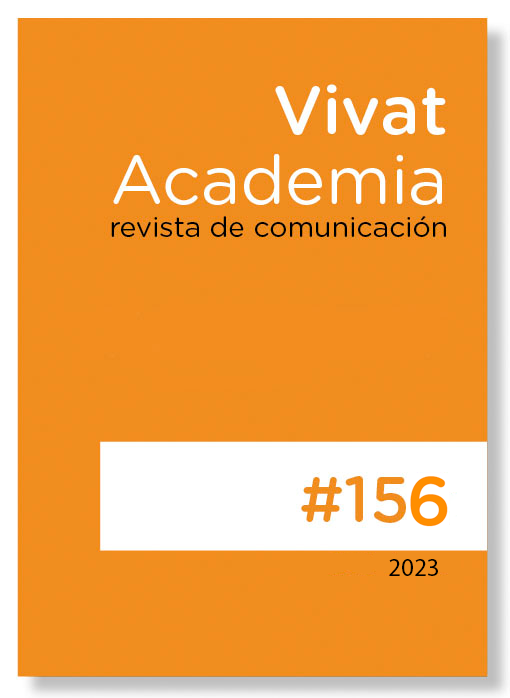Analysis of the online communication strategy of world political leaders during the War in Ukraine (February 24, 2022 - January 23, 2023)
Main Article Content
Abstract
This paper studies the online communication strategies of world leaders during the war in Ukraine from February 24, 2022, to January 23, 2023. To analyze the collected data, various qualitative and quantitative methods such as content and sentiment analysis were used. The findings indicate that the majority of world leaders communicate via Twitter, and their tweets are mainly positive in tone. The most active communication strategies involve using hashtags related to the issues of the war, retweeting messages from other leaders, and issuing statements about the conflict. The results suggest that the participating leaders position themselves as the voice of the nation and emphasize the importance of international solidarity in achieving peace. Furthermore, the study reveals that the leaders are highly engaged in bidirectional communication, with the majority of messages focused on people's safety and the need for a diplomatic solution. The findings of this study could help policymakers understand how online communication plays a role in international conflict resolution as well as how world leaders can effectively use online communication to engage with their public.
Downloads
Article Details

This work is licensed under a Creative Commons Attribution-NonCommercial-ShareAlike 4.0 International License.
References
Drylie-Carey, L., Sánchez-Castillo, S., & Galán-Cubillo, E. (2020). European leaders unmasked: COVID-19 communication strategy through twitter. El Profesional de la Información, 29(5), 1-15. https://doi.org/10.3145/epi.2020.sep.04
Duncombe, C. (2019). The Politics of Twitter: Emotions and the Power of Social Media. International Political Sociology, 13(4), 409-429. Scopus. https://doi.org/10.1093/ips/olz013
Feinerer, I., Hornik, K., Software, A., & Ghostscript), I. (2022). tm: Text Mining Package (0.7-10). https://CRAN.R-project.org/package=tm
Fellows, I. (2018). wordcloud: Word Clouds (2.6). https://bit.ly/42bzhUH
Hagen, L., Neely, S., Scharf, R., & Keller, T. E. (2020). Social Media Use for Crisis and Emergency Risk Communications during the Zika Health Crisis. Digital Government: Research and Practice, 1(2). https://doi.org/10.1145/3372021
Hänska, M., & Bauchowitz, S. (2019). Can social media facilitate a European public sphere? Transnational communication and the Europeanization of Twitter during the Eurozone crisis. New Media & Society, 5. https://doi.org/10.1177/2056305119854686
Haq, E.-U., Braud, T., Lee, L. H., Mogavi, R. H., Zhang, H., & Hui, P. (2022). Tips, Tidings, and Tech: Governmental Communication on Facebook During the COVID-19 Pandemic. The 23rd Annual International Conference on Digital Government Research, 105-117. https://doi.org/10.1145/3543434.3543642
Jockers, M. (2020). syuzhet: Extracts Sentiment and Sentiment-Derived Plot Arcs from Text (1.0.6). https://CRAN.R-project.org/package=syuzhet
Kearney, M. W., Sancho, L. R., Wickham, H., Heiss, A., Briatte, F., & Sidi, J. (2023). rtweet: Collecting Twitter Data (1.1.0). https://CRAN.R-project.org/package=rtweet
London, J., Jr., & Matthews, K. (2022). Crisis communication on social media—Lessons from COVID-19. Journal of Decision Systems, 31(1–2), 150-170. Scopus. https://doi.org/10.1080/12460125.2021.1926612
Proellochs, N., & Feuerriegel, S. (2021). SentimentAnalysis: Dictionary-Based Sentiment Analysis (1.3-4). https://CRAN.R-project.org/package=SentimentAnalysis
Tasențe, T. (2023a). Online communication of European public institutions and NATO during the crisis in Ukraine (February 24, 2022 - December 24, 2022). Technium Social Sciences Journal, 39, 195-206. https://doi.org/10.47577/tssj.v39i1.8187
Tasenţe, T. (2023b). Online communication strategy of world political leaders during the Ukraine crisis (February 24 - December 24, 2022). Comparative case study: Joe Biden, Ursula von der Leyen and Jens Stoltenberg. Technium Social Sciences Journal, 39, 207-219. https://doi.org/10.47577/tssj.v39i1.8220
Artículos relacionados
Barrientos-Báez, A. y Caldevilla-Domínguez, D. (2022). Factores neurocomunicativos en la difusión de fake news apoyadas en fotografías. Revista de Investigaciones Universidad del Quindío, 34(S5), 301-314. https://doi.org/10.33975/riuq.vol34nS5.1121
Colom-Piella, G. (2020). Anatomía de la desinformación rusa. Historia y Comunicación Social, 25(2), 473-480. https://doi.org/10.5209/hics.63373
Donofrio, A., Rubio Moraga, Ángel L. y Abellán Guzmán, C. (2023). Rusia-Ucrania, un análisis comparativo de la audiencia en Twitter de los perfiles del Gobierno de la Federación Rusa y la Oficina del Presidente de Ucrania. Revista Latina de Comunicación Social, 81, 18-43. https://doi.org/10.4185/RLCS-2023-1819
Ruiz del Olmo, F. J. y Bustos Díaz, J. (2020). Las imágenes publicadas en Twitter como forma de comunicación política. El caso de las elecciones generales del año 2016 en España. Revista Latina de Comunicación Social, 75, 313-326. http://doi.org/http://doi.org/10.4185/RLCS-2020-1428
Tavares, A. (2022). The world in the post-pandemic time: Geopolitical and geostrategic implications for a new world order. HUMAN REVIEW. International Humanities Review, 15(5), 1-8. https://doi.org/10.37467/revhuman.v11.4297





